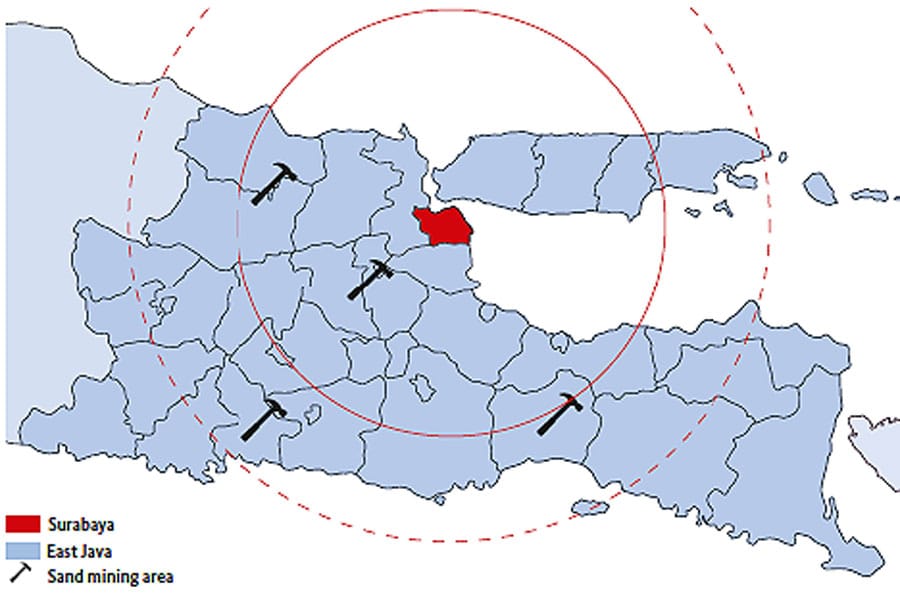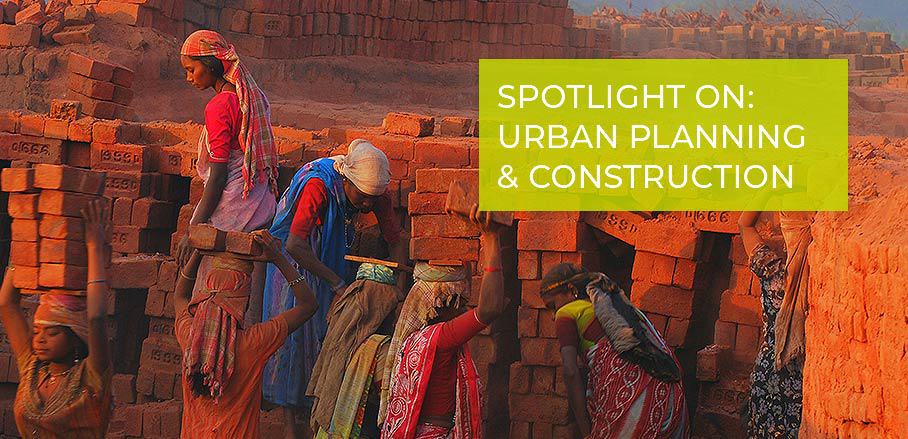Local Value Addition in India’s and Indonesia’s Construction Raw Materials Sectors
Construction raw materials are a source for local value addition – if their potential is fully tapped. The sector project “Extractives and Development” of the “The Federal Institute for Geosciences and Natural Resources” (BGR) presents its research results – and emphasises the need to pay special attention to labour rights and environmental protection.
Analysis of Potential
Construction raw materials and industrial minerals make up 84 per cent of the global mineral production. The “Extractives and Development” project focusses on construction raw materials and their potential for the local economy in developing and emerging countries. It can be summarised that while construction raw materials are typically low in price, their suitability for exports is limited. Yet, they can boost local value addition and thus contribute to strengthening the local economy and reducing poverty.
To explore this potential for India and Indonesia, the sector project commissioned Levin Sources to conduct a study. The study features a value chain analysis of selected construction raw materials such as sand, clay, and dimension stones, identifies environmental and socio-economic market barriers, and analyses potentials and opportunities to better understand the respective sectors.
The study matches mining supply to urban demand of construction raw materials in a 150-kilometre radius around two cities. Rates of population growth and urbanisation suggested the urban centres of New Delhi (India) and Surabaya (Indonesia) as suitable locations for the case studies.
Value Chains in Surabaya, Indonesia and New Delhi, India
In the region around Surabaya, sand and gravel mining occurs in Lumajang along the Bengawan Solo River, close to the village Simo (Tuban), in Tulungagung and in Trowulan (Figure 1).

Figure 1: Sand mining locations around Surabaya
The extracted sand and gravel is used to manufacture cement, asphalt, mortar, and concrete to build infrastructure, such as roads and buildings. Looking at the value chain from extraction to usage (figure 2), one can note that the Indonesian value and supply chain is rather fragmented.

Figure 2: Sand value chain Indonesia
This constitutes a major difference to the respective value chain that the study has determined for India (figure 3). This can mainly be attributed to a lack of infrastructure. This is problematic, as lacking infrastructure indirectly hinders the development of necessary new infrastructure.

Figure 3: Sand value chain India
Both in India and Indonesia, a closer research on the value chains let the researchers note several more aspects which additionally complicate local value addition. For one, missing standards result in products of poor quality, which are replaced by imported high quality products.
Violations of Labour Rights
However, most of the problems that could be identified in the construction raw material sector are related to the informality of many mining enterprises. Examples of identified issues include: forced labour, operational health and safety, corruption, smuggle, competing land uses, infrastructure damage, and violence.
In India’s sand industry, child labour in its worst forms occurs for example during the loading and unloading of trucks with illegally mined sand. Data from the province of East Java in Indonesia suggests that strong educational policies might help lower child labour rates: the province sees a relatively low rate of 3.4 per cent of children working compared to a national rate of 4.2 per cent.
Another common phenomenon that can be observed in both countries is bonded labour. In East Kalimantan, Indonesia, many Mandurese workers have high debts to brickyard owners, causing bonded labour. In India, 84 per cent of construction sector workers are contracted through labour brokers. In such arrangements, workers are only paid if they complete their work project, which causes them to ask for advances, to debt, and thus to bonded labour. Additionally, most of the migrant workers do not have a formal contract.
Environmental Impacts
Another issue that the study identified concerns negative environmental impacts. Problems include for example water depletion and pollution, greenhouse gas emissions, as well as negative impacts on biodiversity.
In Indonesia, sand extraction has caused significant environmental impacts, which made Indonesia set up an export ban for sand and gravel in 2007. However, this ban increased sand smuggling, corruption, and bribery.
Market Barriers and Options for Local Politics
The study has identified several aspects that prevent the construction raw material sector from adding to local value addition and thus contributing to the local economy. These include:
- lack of data
- lack of coordination between national and sub-national governments
- lack of human resources and institutional capacity of sub-national governments to monitor and regulate mining
- complex and fragmented supply chains
- lack of quality standards
- widespread informality.
To overcome these barriers, governments need to employ strong local content requirements. Another option to strengthen the sector is the promotion of small and local businesses and the harmonisation of construction supply chains. India and Indonesia are aware of the problem and, as one measure, have imposed export bans.
Additionally, Indonesia adapted its mining law: regional governments now have authorisation to manage non-metal and rock minerals themselves. In India as well, construction raw materials can be managed locally.
The envisaged benefit of this is that locally managed minerals will be taxed locally. This has the potential to enlarge the wealth of a region and therefore allow to set up infrastructure which positively impacts value chains and livelihoods. Unfortunately, due to wide-spread informality of the sector, such advantages of regional taxation do not occur.
A next step would be to focus on the identified risks and barriers and identify targeted activities to minimise their negative impact. For this, it is important that more people understand the importance of the construction raw materials sector and its impact on livelihoods.
The global Covid-19 pandemic caused considerable delays in conducting the research. The published study, therefore a preliminary desk study, is now available here. Part 2 will presumably be published in 2021 and will contain a full market study and a potential analysis.
Please contact Hannah Maul for further information.
